Wales features a region with three national parks, including Brecon Beacons and the Pembrokeshire coast park, as well as fortresses like Conwy and Caernarfon castles built by Edward I in the 13th century, and religious buildings such as St. David's Cathedral. The coastline alternates between red sandstone cliffs, sandy beaches, and islands like Anglesey, while the inland reveals mountains, lakes, and valleys such as the Elan Valley with its historic dams. Welsh towns preserve their architectural heritage, with Cardiff as the capital. The Gower Peninsula offers limestone cliffs and sea caves, Tintern Abbey has been a Cistercian monastery since 1131, and Powis Castle features terraced gardens. Former mining regions and botanical sites reflect the country's industrial and cultural evolution.

Conwy, Wales
Conwy Castle was commissioned by Edward I of England between 1283 and 1289 and is surrounded by a curtain wall with eight towers. The defensive walls reach up to 4.5 meters in thickness and formed part of the fortifications to control North Wales.
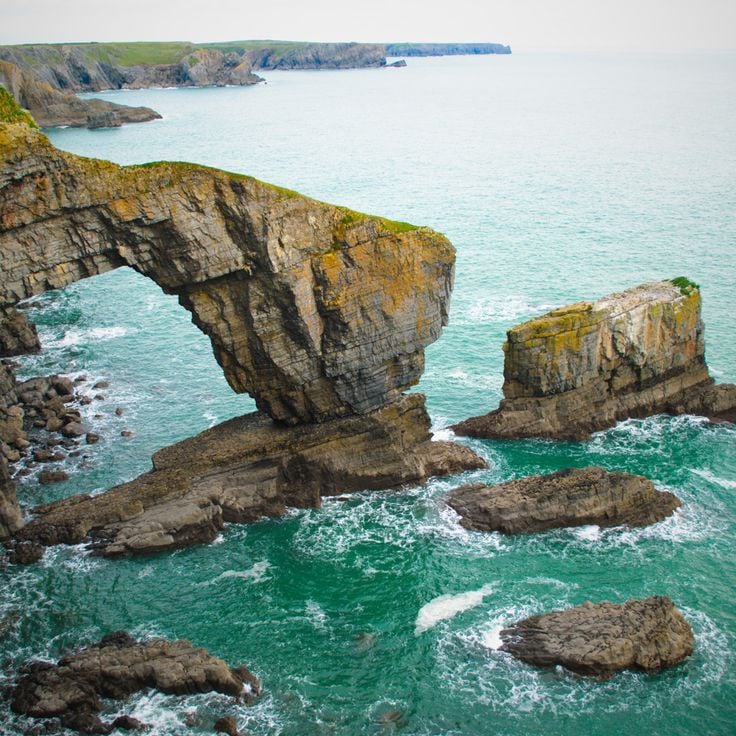
Pembrokeshire, Wales
The Pembrokeshire Coast National Park extends over an area of 629 square kilometers along the Welsh coast. This protected area includes red sandstone cliffs, sandy beaches, small coves, and numerous coastal hiking trails that wind through diverse landscapes.
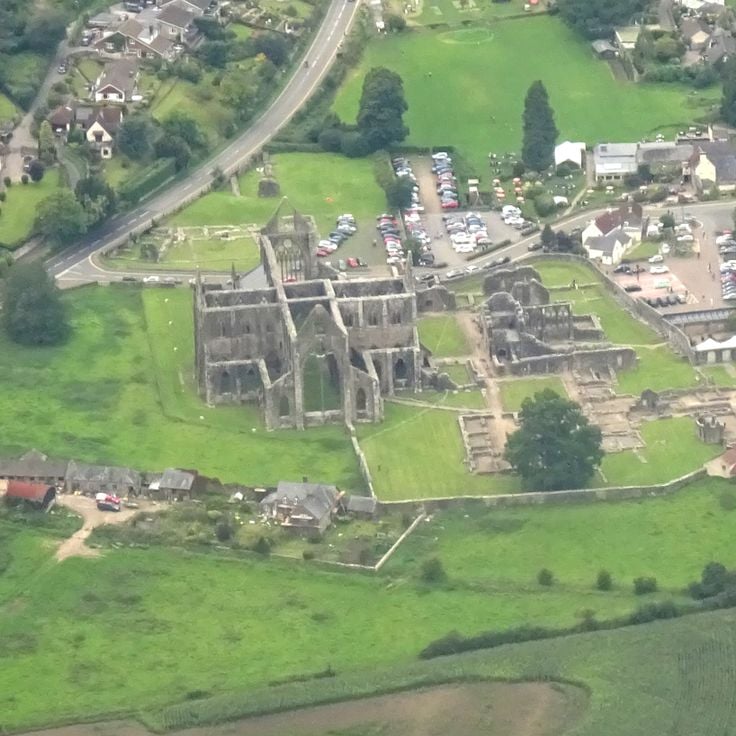
Monmouthshire, Wales
Tintern Abbey was founded in 1131 by Cistercian monks and developed into a major monastery in South Wales. The ruins display Gothic architecture with tall pointed arches, lancet windows and vaulted structures that reflect 13th-century craftsmanship. The monks followed the Rule of Saint Benedict here until the Dissolution of the Monasteries under Henry VIII in 1536. Its location in the Wye Valley later inspired Romantic artists and poets.
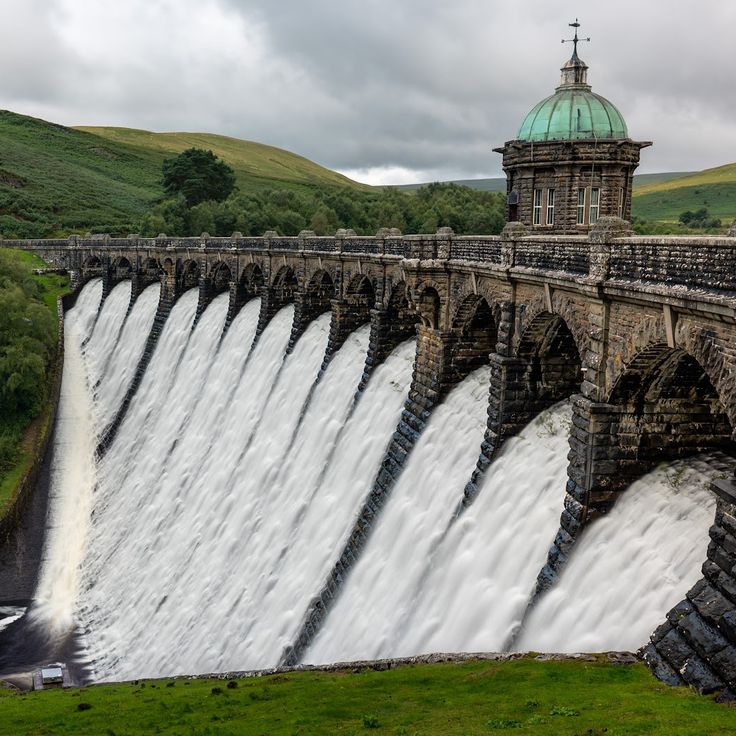
Powys, Wales
The Elan Valley contains a water supply system constructed between 1893 and 1904, comprising four reservoirs and masonry dams that provide water to Birmingham.
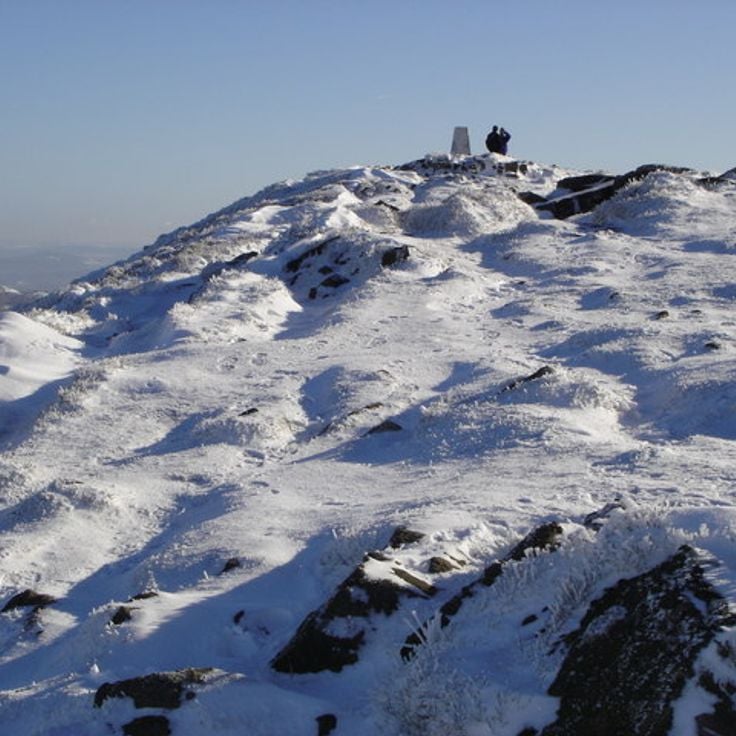
Powys, Wales
The Brecon Beacons National Park covers 1347 square kilometers and encompasses mountain peaks, valleys, lakes, and waterfalls. The area features a network of marked hiking trails that guide visitors through varied landscapes. The highest elevations exceed 800 meters and provide landmarks for walkers.
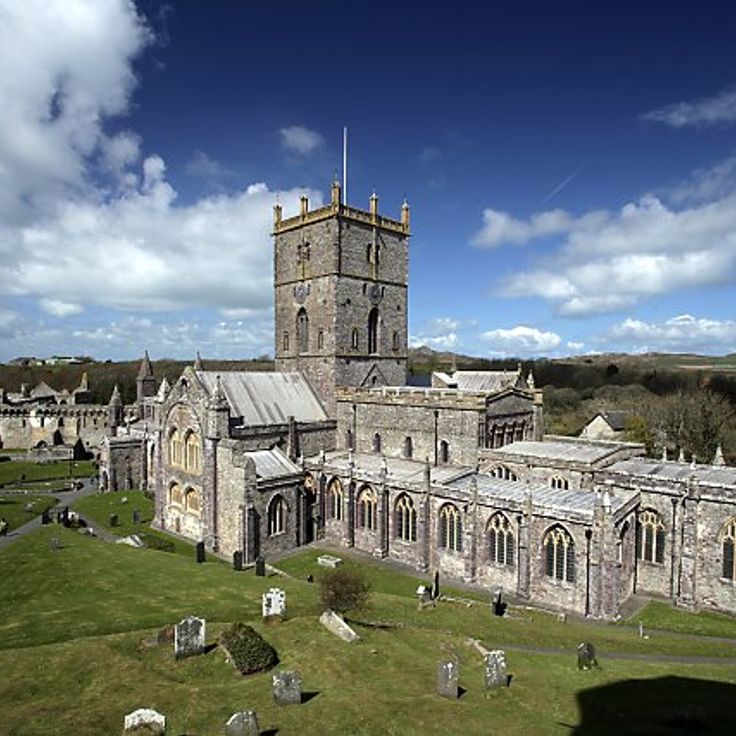
St Davids, Wales
St Davids Cathedral was constructed in the 12th century on the foundations of a 6th-century monastery. The religious building combines Romanesque and Gothic architectural elements in its construction.
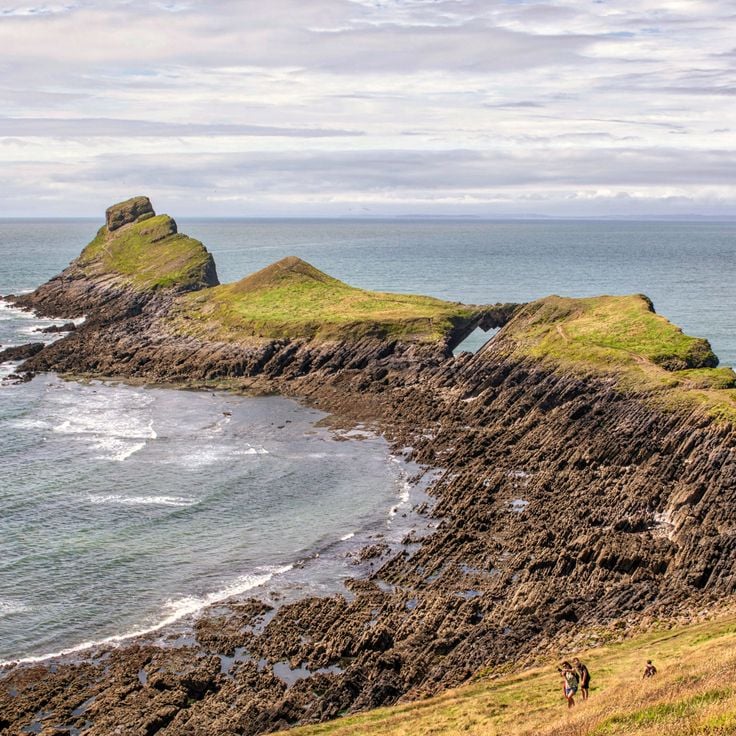
Swansea, Wales
The Gower Peninsula extends over 70 square kilometers and is characterized by its limestone cliffs, sandy beaches, and sea caves. The area also includes several archaeological sites from different periods.
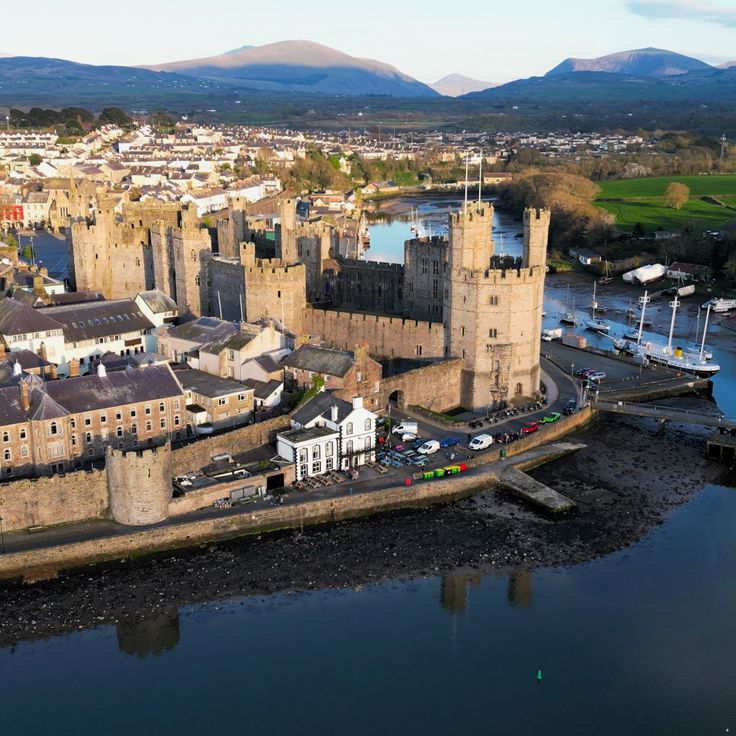
Caernarfon, Wales
Caernarfon Castle was built in the 13th century by King Edward I as a military fortress. Its polygonal walls and defensive towers rise above Caernarfon harbour and served to control the north Welsh coast. The structure is part of the UNESCO World Heritage Site and is considered one of the most important castles from the period of the English conquest of Wales.
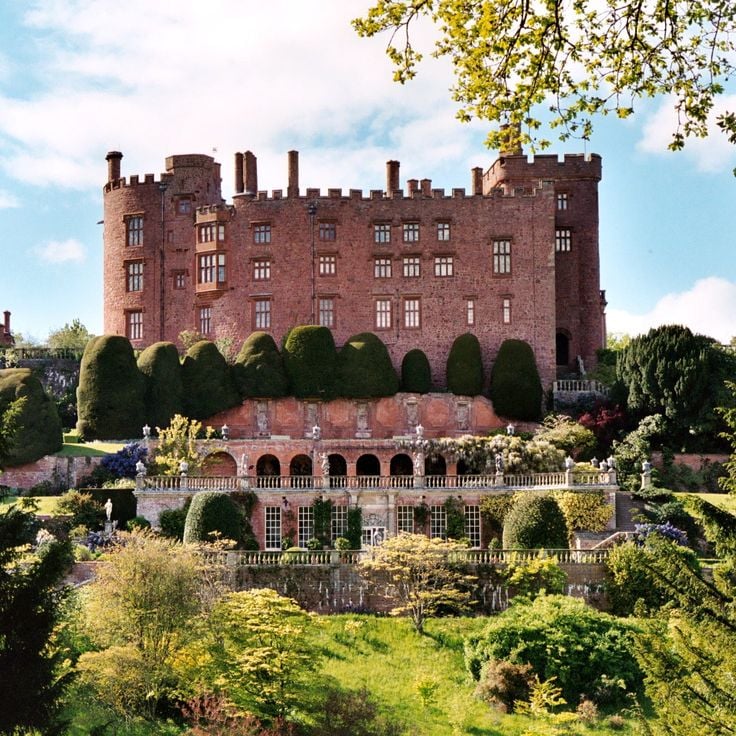
Powys, Wales
Powis Castle was built in the 13th century and houses significant art collections from European masters. The Italian-style gardens extend across multiple terraces lined with ancient yew trees. The estate belongs to the National Trust and displays furniture, paintings and textiles from various periods.

Anglesey, Wales
The Isle of Anglesey is located in northwest Wales and connected to the mainland by two bridges. This island contains sandy beaches along its coastline, several lighthouses, and archaeological sites from the Neolithic and Bronze Age periods, including burial chambers and stone circles.
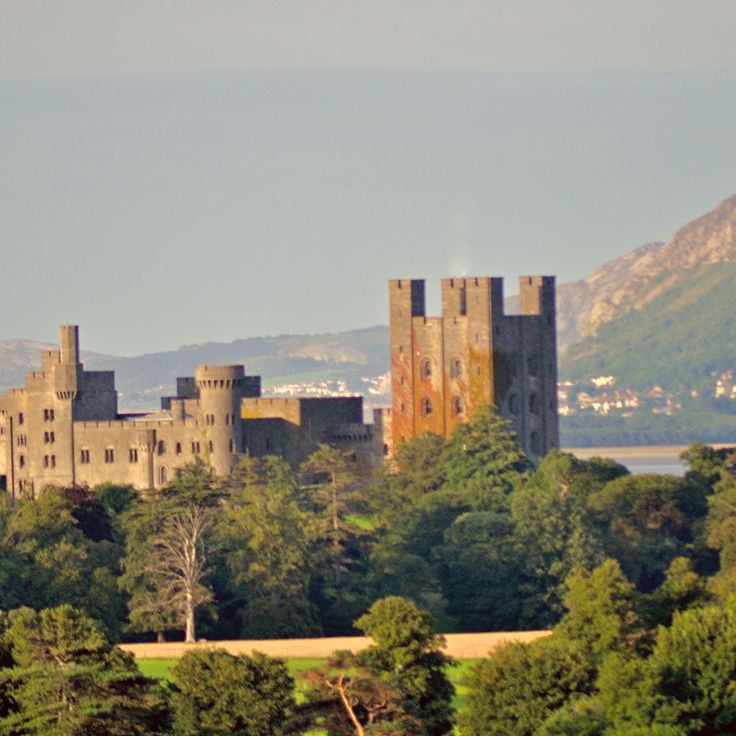
Gwynedd, Wales
Penrhyn Castle was constructed between 1820 and 1833 in Norman Revival style and combines Gothic architectural features with an extensive collection of historical furniture and paintings from various periods.
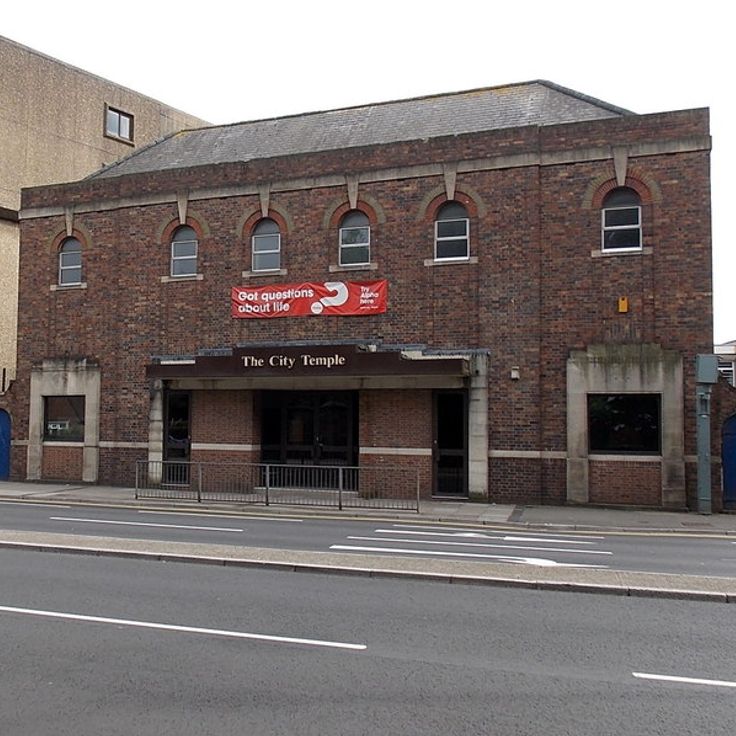
Cardiff, Wales
Cardiff has been the administrative and commercial centre of Wales since 1955. The city contains a medieval castle in the city centre, a harbour in Cardiff Bay, and several national museums, including the National Museum Cardiff with its art collection and natural history exhibits.
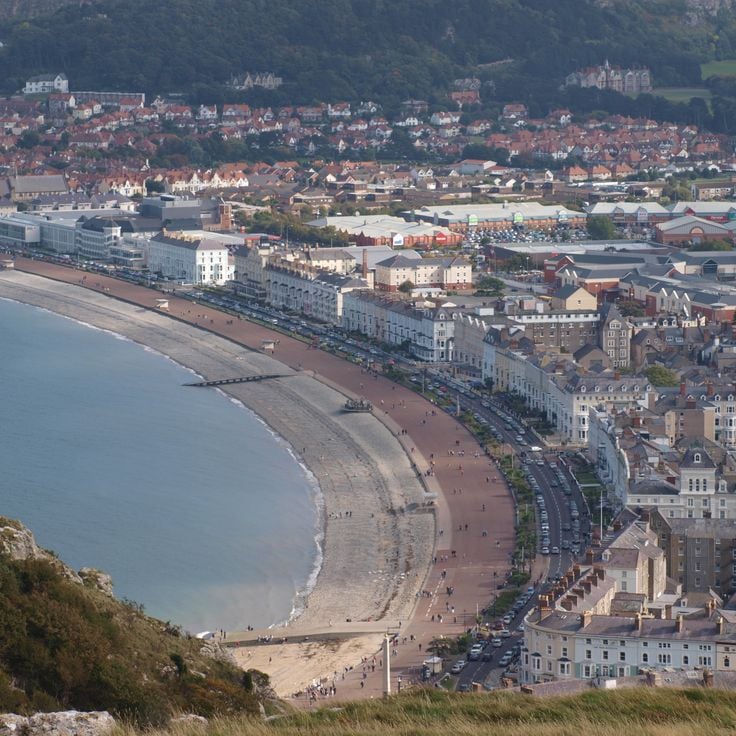
Conwy, Wales
Llandudno is a coastal town known for its Victorian architecture. The town has an extended seafront promenade that runs along two beaches. The pier was built in 1878 and remains in operation today. Buildings from the Victorian era define the townscape and attract visitors seeking recreation along the Welsh coast.

Gwynedd, Wales
This national park spans 2170 square kilometers and includes Mount Snowdon, the highest point in Wales at 1085 meters, plus 23 glacial lakes.

Gwynedd, Wales
Portmeirion is a village built by architect Clough Williams-Ellis between 1925 and 1975 on the coast of Gwynedd. The site includes around fifty buildings in Italian style with colorful facades, towers, and domes. The village features landscaped gardens with exotic plants and a sandy beach on the estuary of the River Dwyryd.
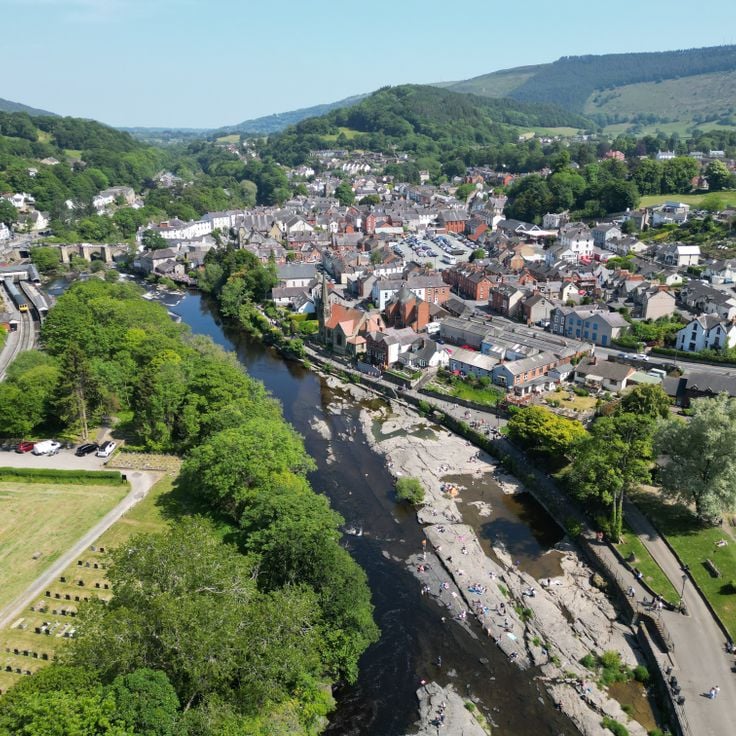
Denbighshire, Wales
Llangollen is crossed by the River Dee and features the 18th-century Llangollen Canal, the Pontcysyllte Aqueduct, and the Llangollen Railway, a preserved steam railway extending 11 kilometers.
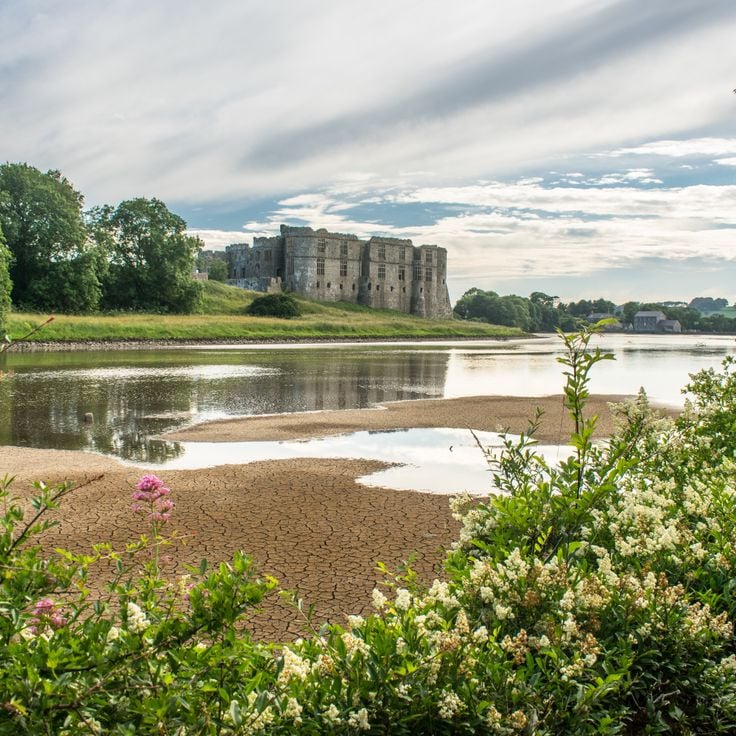
Pembrokeshire, Wales
Carew Castle was built in the 13th century by the Normans and stands on the edge of a tidal millpond. This military structure features several round towers and thick stone walls with battlements. The site includes a keep and a large great hall with Gothic windows. The castle is surrounded by maintained gardens that offer walking paths. Nearby stands an 11th-century Celtic cross, one of the tallest in Wales.
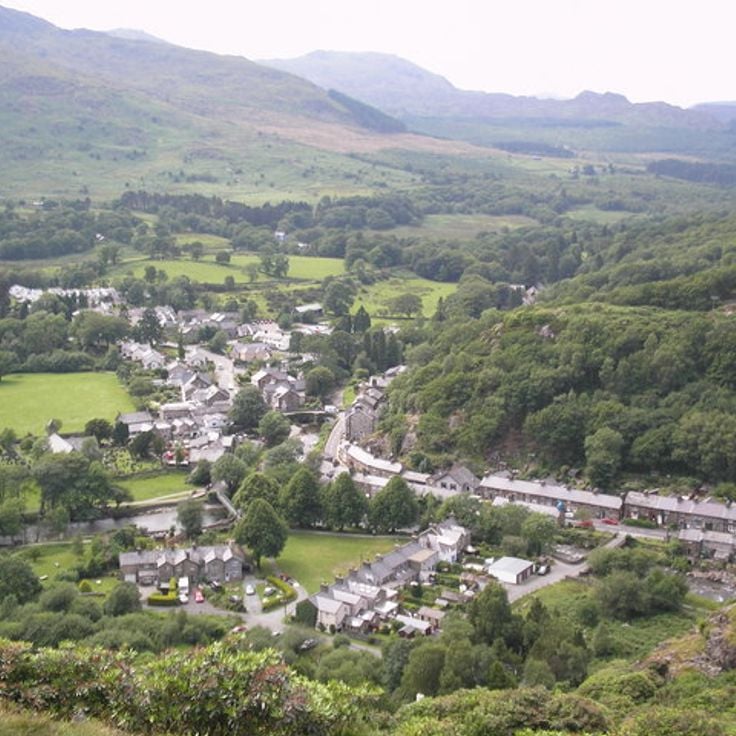
Gwynedd, Wales
Beddgelert is a village in Snowdonia National Park where stone bridges cross the Glaslyn River. The granite houses date from various centuries and form the historic village centre. This location serves as a starting point for walks into the surrounding mountains and sits at the confluence of the Glaslyn and Colwyn rivers.
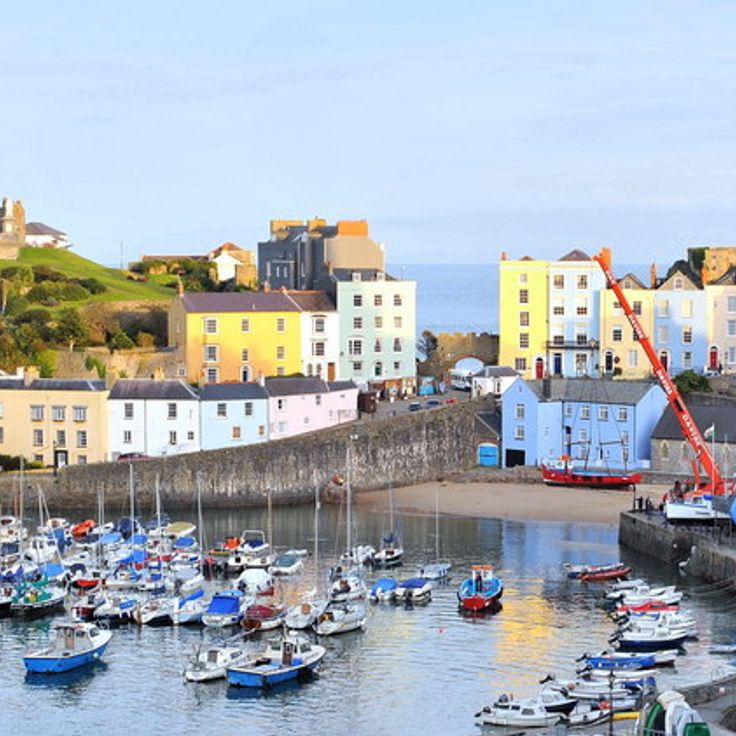
Pembrokeshire, Wales
Tenby is a medieval fishing port that features sandy beaches, houses painted in various colors, and preserved town walls from the 13th century. This coastal town has served as a trading center since medieval times and offers a protected harbor along with several bathing beaches.

Monmouthshire, Wales
Chepstow Castle was built on limestone cliffs overlooking the River Wye. This medieval fortress represents one of the oldest stone castles in Britain, with the earliest structures dating from 1067, constructed shortly after the Norman conquest. The strategic position on the border between England and Wales made this castle an important military stronghold for several centuries.
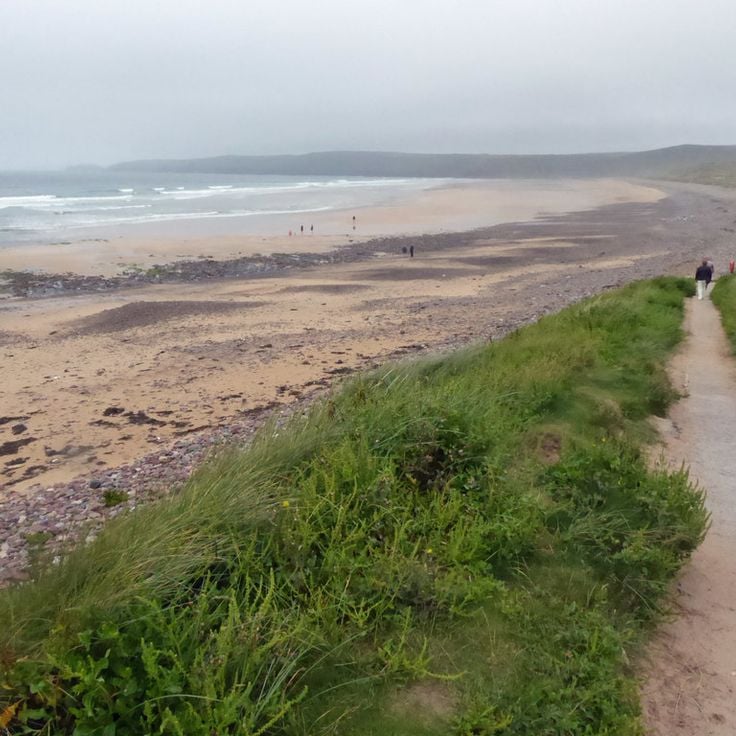
Pembrokeshire, Wales
Freshwater West is a sandy beach measuring 2 kilometers in length, bordered by dunes and rocky cliffs. The waves at this coast have attracted surfers from various regions since the 1970s. The beach is located on the southwestern coast of Pembrokeshire and offers conditions for different water sports.
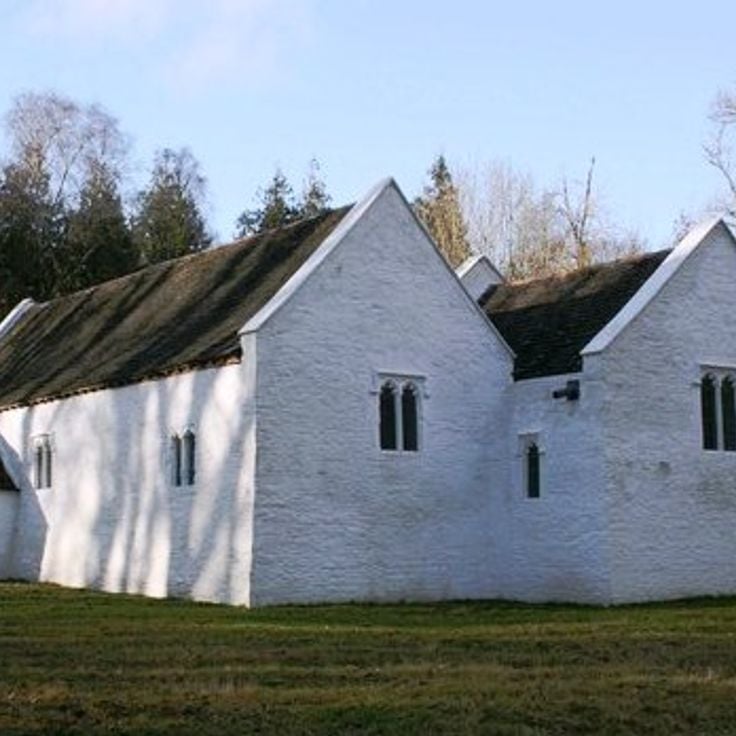
Cardiff, Wales
St Fagans National Museum of History displays 40 historic Welsh buildings reconstructed across a 40-hectare site. Visitors can observe craftsmen practicing traditional trades such as blacksmithing, weaving, and pottery. This open-air museum illustrates the evolution of Welsh life from Celtic villages to 20th-century workers' cottages.

Conwy, Wales
Bodnant Gardens cover 32 hectares and were established in 1874. The gardens feature terraced flower beds, expansive lawns, and a 55-metre laburnum tunnel that blooms in spring. The site combines formal garden structures with naturalistic plantings and includes collections of rhododendrons, camellias, and magnolias.
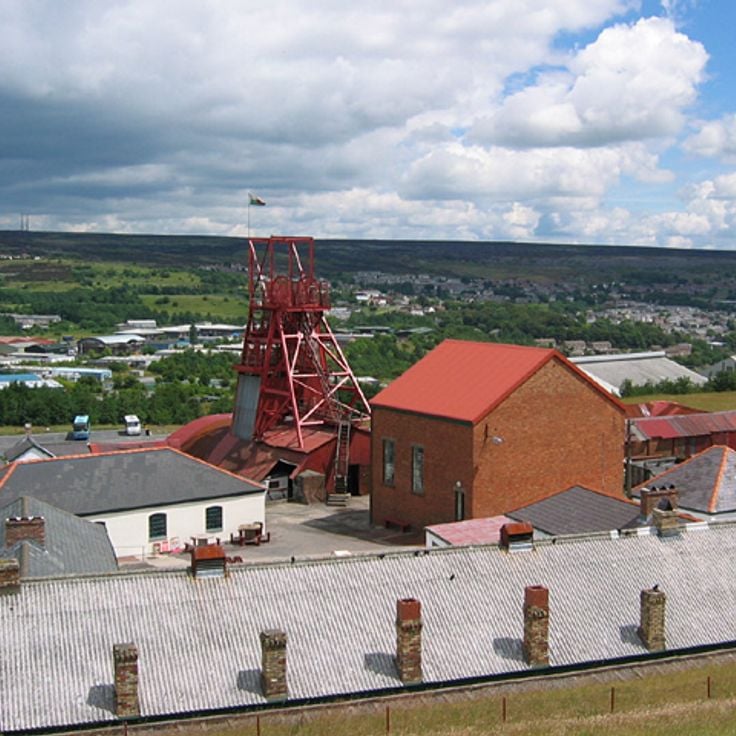
Torfaen, Wales
The Big Pit National Coal Museum is a former coal mine that operated from 1880 to 1980, now serving as a museum. Visitors descend 90 meters underground accompanied by former miners and experience the working conditions in the galleries. The museum displays machinery, tools and documents from the history of Welsh coal mining.
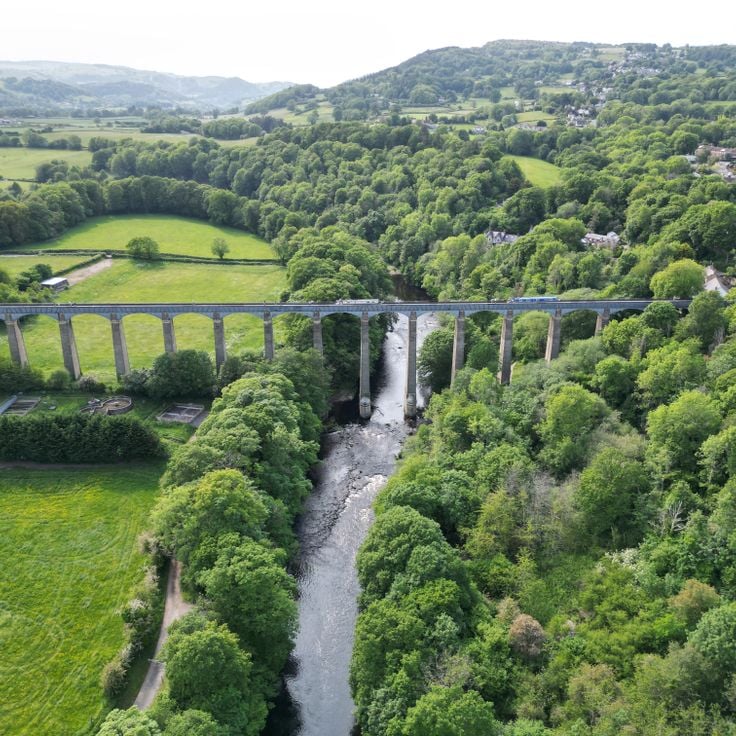
Wrexham, Wales
The Pontcysyllte Aqueduct was built in 1805 from cast iron and stone, carrying the Llangollen Canal across the Dee Valley at a height of 38 meters. This engineering structure spans 307 meters in length and features 19 arches. Boats can cross on a narrow trough while pedestrians use the adjacent walkway. The aqueduct is designated as a UNESCO World Heritage Site and represents an outstanding achievement of engineering during the Industrial Revolution in Britain.
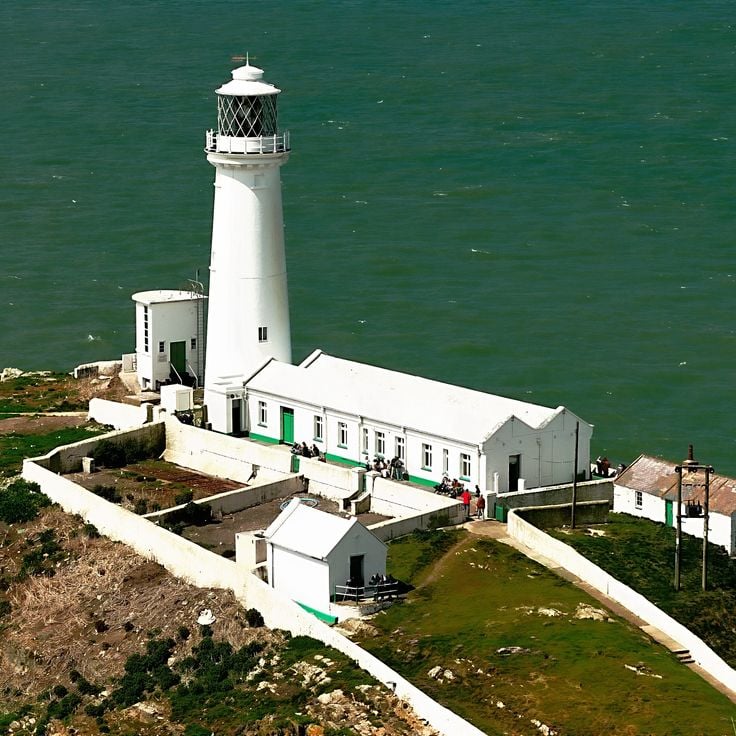
Anglesey, Wales
The South Stack Lighthouse was erected in 1809 on a rocky island and has been guiding ships through the Irish Sea for over two centuries. The cliffs surrounding the lighthouse serve as breeding grounds for puffin colonies and other seabirds. Access is via 400 steps leading down to the rocky island.
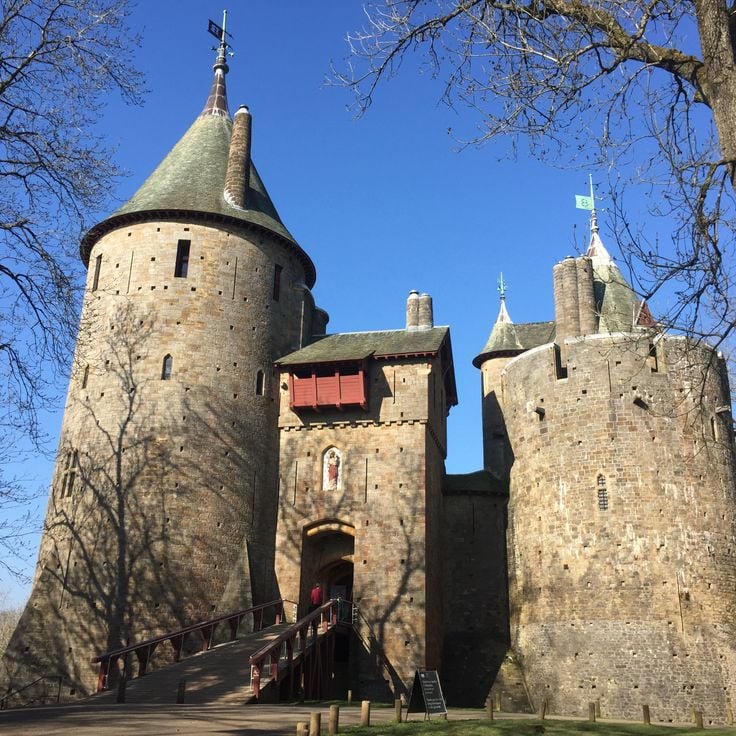
Cardiff, Wales
Castell Coch was built in the 19th century by William Burges on the ruins of a medieval fortress. The structure features conical towers and contains interiors with detailed frescoes depicting themes from mythology and nature.

Cardiff, Wales
The Wales Millennium Centre opened in 2004 and houses performances of opera, dance and theatre. The building features architecture combining copper and Welsh slate, giving it a distinctive appearance. This complex serves as the national centre for performing arts and welcomes numerous international and local productions throughout the year.
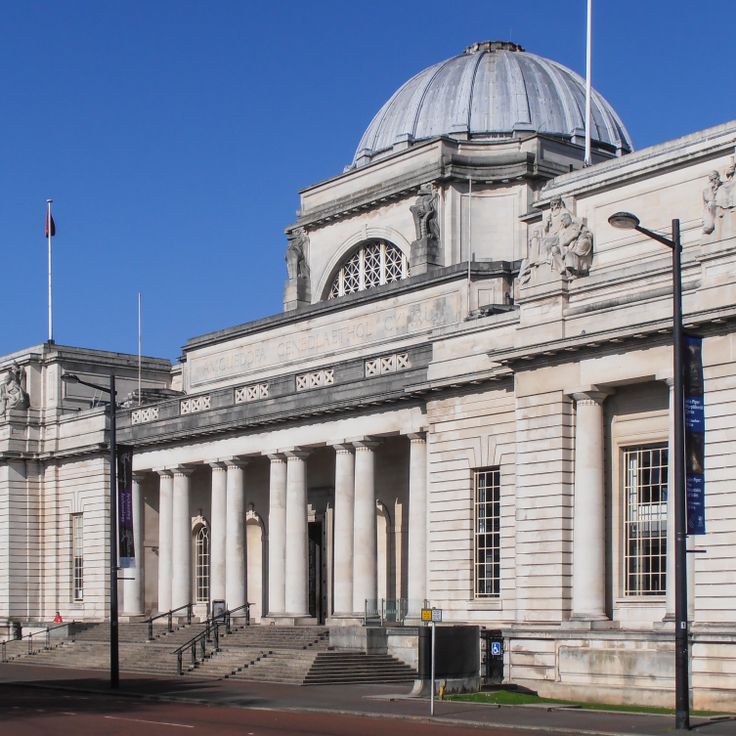
Cardiff, Wales
The National Museum Cardiff presents an extensive collection of European paintings and sculptures from the 15th to the 20th centuries, including works by Monet, Renoir, and Cézanne. The museum's natural history sections display Welsh dinosaur fossils, taxidermied mammals, and an ornithological collection featuring birds from various continents.
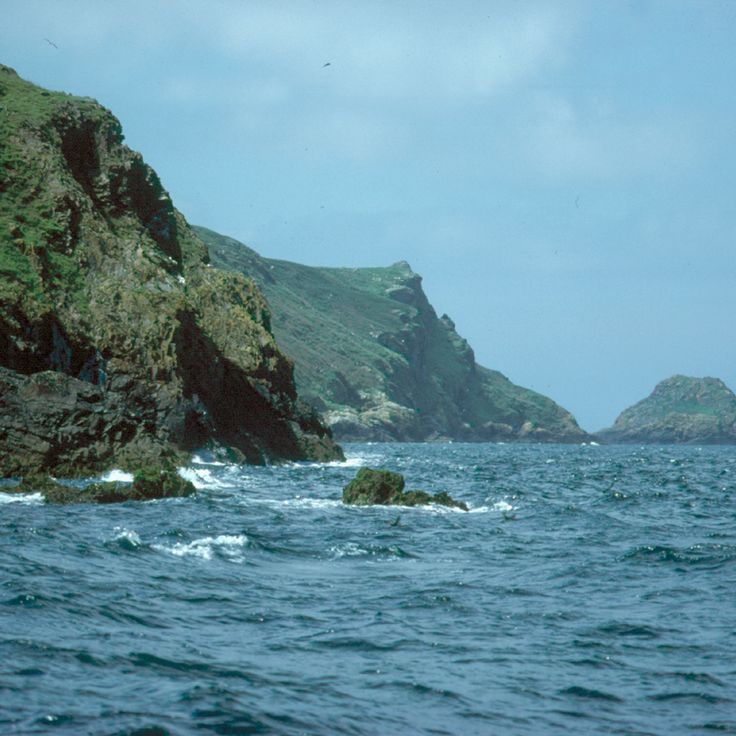
Pembrokeshire, Wales
Skomer Island is a nature reserve that hosts approximately 6000 breeding pairs of puffins from April to August. In addition to these seabirds, the island is home to storm petrels and an established colony of grey seals that can be observed along the coastline.

Anglesey, Wales
Beaumaris Castle was built in the 13th century under King Edward I and represents an example of concentric military architecture. The fortress features double ring walls, four rectangular corner towers, and two gatehouses with substantial defensive structures. The system of water-filled moats was originally connected to the sea, allowing supply by ship. Though never fully completed, the structure demonstrates the advanced fortification techniques of the medieval Welsh Wars.
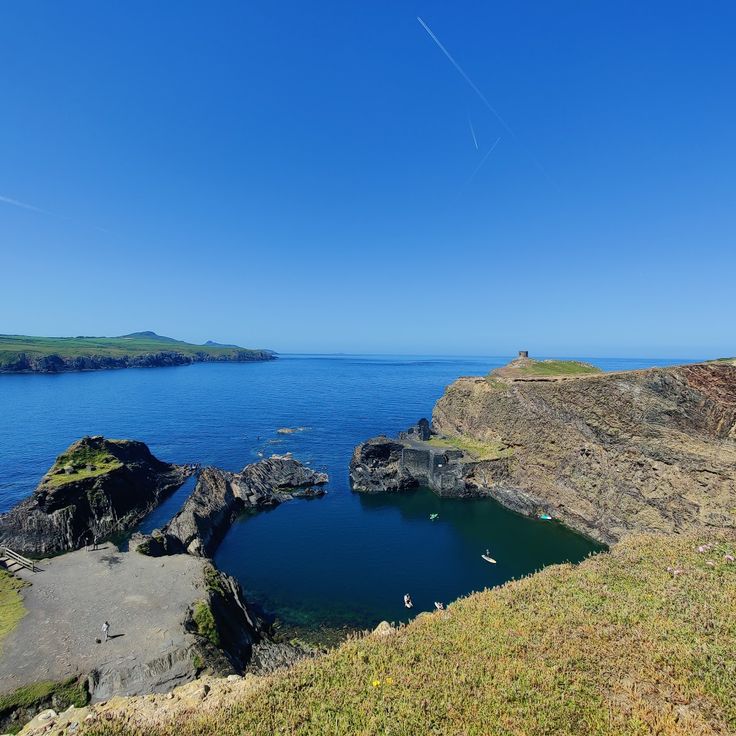
Pembrokeshire, Wales
The Blue Lagoon in Pembrokeshire occupies a former slate quarry that filled with rainwater over time. The site features turquoise water surrounded by rock faces rising 25 meters above the surface. The depth and surrounding cliffs make this location popular with swimmers and cliff jumpers throughout the warmer months.
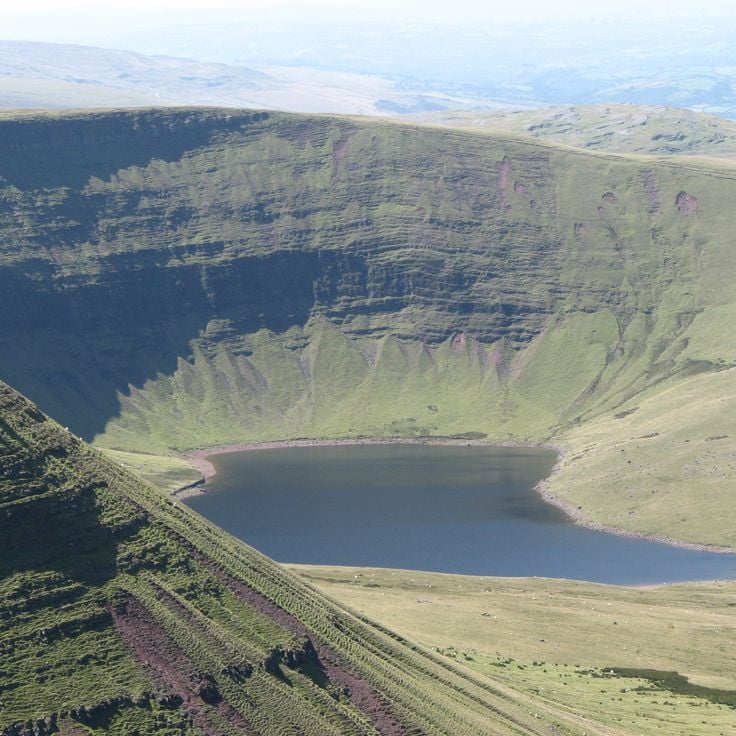
Brecon Beacons, Wales
This glacial lake sits at 605 meters altitude on the northern slope of the Black Mountains within Brecon Beacons National Park. The body of water formed during the last ice age and is surrounded by steep rock faces. Welsh folklore recounts tales of a lake maiden who reportedly encountered a farmer here and became the central figure in several regional narratives.

Llŷn Peninsula, Wales
The Trefor Sea Stacks consist of three granite columns rising 50 meters above sea level. These rock formations on the northern coast of the Llŷn Peninsula are used by climbers for maritime routes and offer access via water during calm conditions.
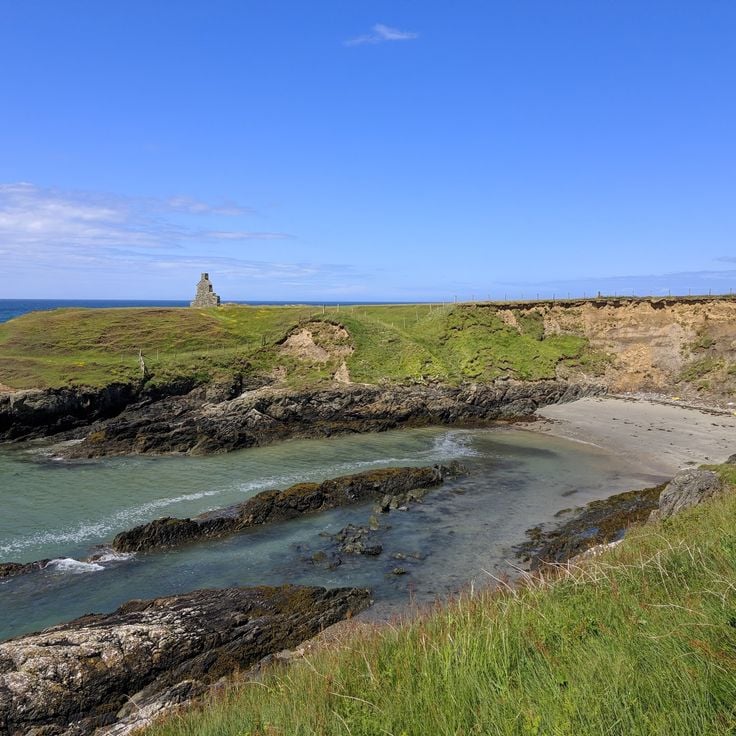
Llŷn Peninsula, Wales
This small cove preserves the remains of a 19th-century fishing port. Steps carved into the rock provide access down to the beach.